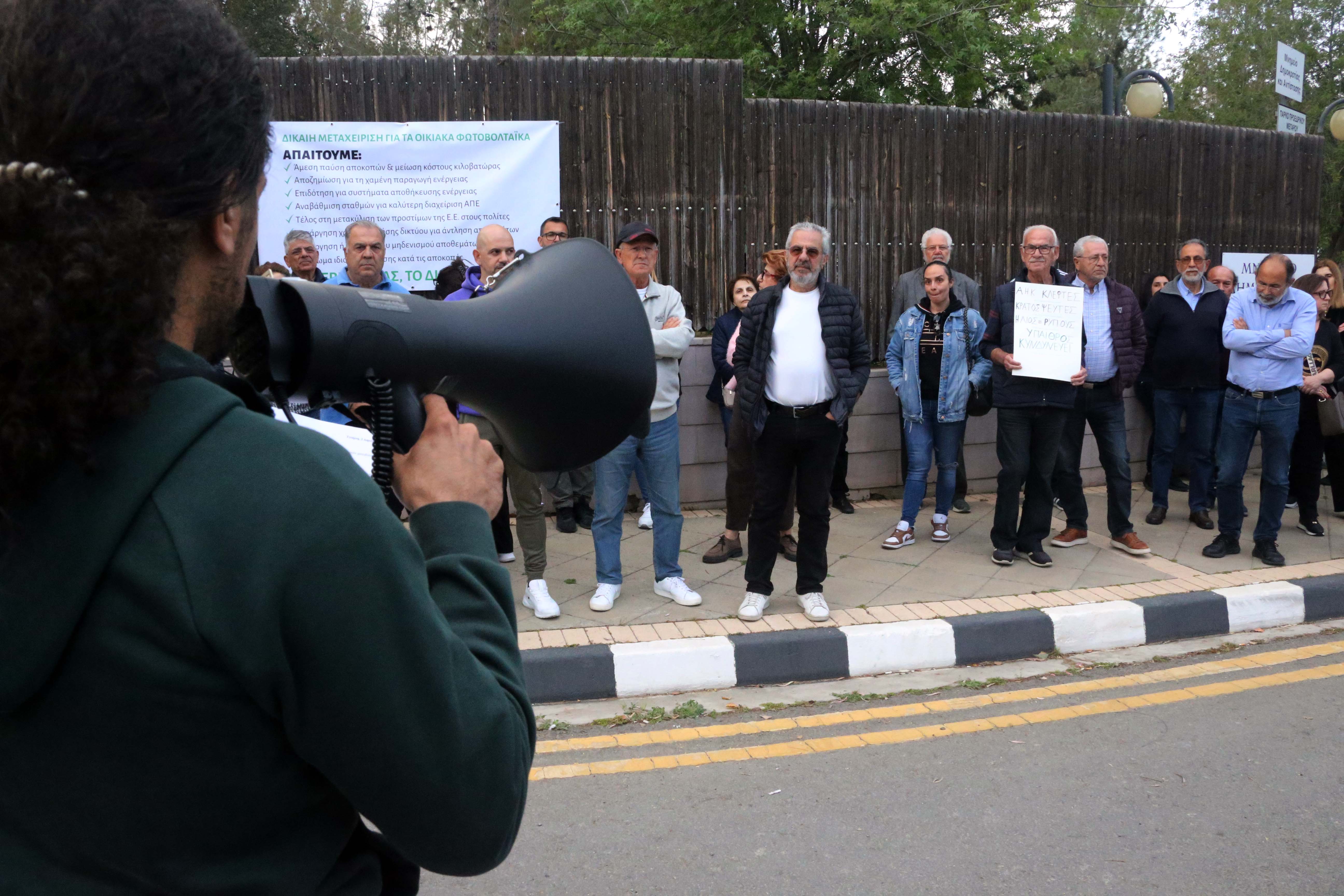A small protest was held outside the presidential palace on Wednesday evening against solar panel shutdowns imposed by the transmission system operator (TSO) on solar panels based at residential properties.
The protest gained support from independent MP Irene Charalambides, who stated on social media that the issue is both unjust and urgent. She urged people to attend, saying it was time to push back against what she called deception.
Transmission system operator (TSO) spokeswoman Chara Koushiappa warned homeowners to monitor their systems regularly, as the automatic shutdowns could leave them disconnected. She advised that if they notice their system has not restarted, they should contact their installer.
The issue stems from lower electricity demand during the cooler months, Koushiappa explained. With conventional power plants running at minimal levels and large solar farms reducing their output, excess energy remains, forcing authorities to cut supply from small commercial and residential solar systems. She noted that this trend will continue for a few months until temperatures rise and demand increases.
Last Thursday at midday, electricity demand stood at 585 megawatts. Conventional power stations generated 225 megawatts, while wind farms contributed 23 megawatts. Solar energy production was estimated at 337 megawatts. By 2pm, demand had dropped to 544 megawatts, with conventional plants generating 235 megawatts and wind power at 10 megawatts. Solar output was estimated at 299 megawatts.
To balance the grid, the TSO follows a specific order when reducing production. Conventional power plants are the first to be cut, bringing their output to the lowest possible levels. Large solar farms are then ordered to halt production. Small commercial and residential solar systems are the last to be disconnected. These systems, controlled remotely, are divided into different categories for staggered shutdowns.
Cyprus’ total installed power capacity includes 1,478 megawatts from conventional power plants, 155.1 megawatts from wind farms, 823.64 megawatts from solar panels, and 12.4 megawatts from biomass energy.
With solar energy shutdowns expected to continue, homeowners must remain vigilant. Those affected should check their systems daily and seek professional support if their panels do not resume operation. Authorities have yet to announce a long-term solution, but as summer approaches, rising demand may naturally ease the problem. However, protestors argue that immediate measures are needed to protect solar panel owners from financial losses and unfair treatment.







Click here to change your cookie preferences